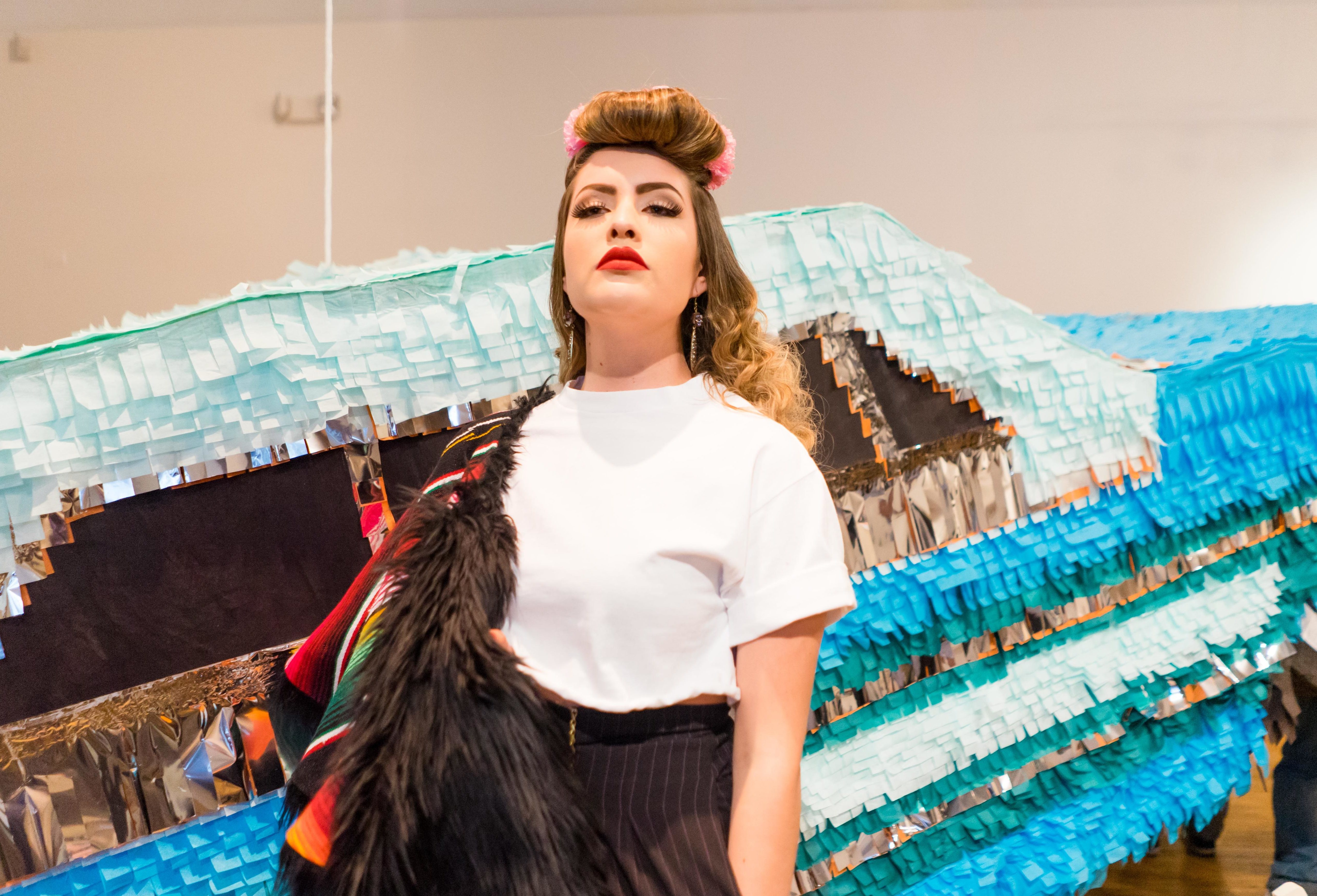It’s not often a fashion show moves people to tears, but Viva la Sirena evoked palpable emotions from attendees. In an intimate setting at Museo de las Americas, the immersive experience began with a blessing by GRUPO TLALOC Danza Azteca, a traditional group of Chicano and Mexicano families dedicated to preserving and upholding the spiritual way of life of the Aztec culture. Dancers clothed in handsewn, beaded garments moved to rhythmic drum beats, enchanting and inspiring the audience.
Following the blessing, models commanded the runway in looks that were a collaborative effort by local designer, Alejandra Peralta, Vanity Dollz founder, Cha Cha Romero and jewelry designer, Xencs L. Wing. The wearable collection, called “Style as Resistance,” was influenced by the Pachuca of the 1940s. The Pachuca’s rebellious flare broke the boundaries of beauty among American women. “The Pachuca were the first women to gender bend, and they really set up Hollywood’s looks at that time, but a lot of people don’t know that’s where fashion came from,” said Romero. “It’s heartbreaking, but after the Zoot Suit Riots, the Mexican culture became very political.” The Zoot Suit Riots were a series of conflicts between American servicemen and Mexican American youth in Los Angeles in 1943. The suits were considered unpatriotic because they contained a lot of fabric that was rationed during World War II. It was a significant moment for race relations at the time, centered around fashion.
Peralta approached Pachuca style with a modern twist, mixing masculine and feminine pieces in an effort to connect today’s youth with roots from their past. “The idea of style as resistance is the epitome of the Pachuca movement and it is very similar to now because we’re self-identifying, but we’re stuck between assimilating and making our space our own,” explained Peralta. “We’re coming into our own and making ourselves known. There are certain things everyone can relate to about the Chicano culture, so that’s the greatest part about this, that we notate and recognize it as a culture in modern times.”
Peralta grew up in the neighborhood near Museo de las Americas and remembers it as a place where people celebrated their culture with large block parties and community collaborations, something she feels is missing today. “I definitely want to make Denver known for the strong community and culture we have and honor that,” she said. “I feel like my designs and the show honor old Denver and kind of bring back the same old feel we had before it became the art district when it was a culturally diverse area.”
Viva la Sirena was a defining evening for Peralta, Romero and Wing, as a way to honor their heritage through their own creative expression. It was also a significant moment for all of us in the audience. The blessing and fashion show connected us through experience and inspired us to not only learn more about the Pachuca culture but about our own backgrounds and heritage as well.
Photography by Meg O’Neill.





